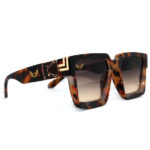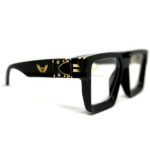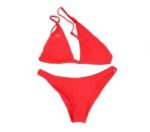Credits: Pexels
More and more people are buying eyewear for a range of reasons. Some are buying eyewear as a response to ongoing fashion trends, while others turn to eyewear for their anti-fatigue and vision correction abilities in an increasingly digital age. Whatever the reason, Grand View Research valued the global eyewear market at $157.9 billion in 2021 with an expected compound annual growth rate of 8.4% from 2022 to 2030. In this post, we’ll go over what significant future eyewear trends we can look forward to, which will likely further this market:
Smart glasses
Smart glasses are one of the most anticipated new eyewear due to their practical potential. Digitally powered, smart glasses will be able to add real-time information to what its wearer sees, and even change the optical properties of the lens through the ability to zoom in. Alongside smartwatches, smart glasses are shaping up to be a big part of wearable tech that could be an accessible commodity to many in the future. Maryville University’s feature on technology and patient care reveals that this type of wearable device may even offer a snapshot of a user’s health from afar, which medical professionals can use to monitor their health closely. For instance, data from smart glass health trackers may be sent to a physician, so they can determine underlying health conditions from a patient’s eye movements. While these innovations are in their early stages, smart glasses are expected to be more expensive than other types of eyewear. Soon smart glasses will be a highly-useful wearable device that will also double as an essential fashion accessory .
Sustainable eyewear
Like everything else that is mass produced, one of the main challenges in the future of eyewear is a growing concern over its environmental impact, as productions keep up with increasing demand. Along with the environmental aspect of sustainable eyewear, concerns may also be raised about their fashion value. After all, prioritizing sustainable materials in eyewear production could compromise its aesthetic, right? Not in the case of UK designer Jack Spencer and his upcycled denim sunglasses. Prioritizing both aesthetic and the environment, Spencer’s denim sunglasses are water-resistant and repel sweat and sunscreen, just like normal sunglasses, except that they are made from denim sourced in local thrift stores and leftovers from clothing companies. While this is a great start in prioritizing slow fashion that is environmentally friendly and still trendy, Spencer’s endeavor is just one of many ongoing attempts to turn eyewear towards more sustainable production and marketing.
Health-focused eyewear
More people, particularly children, need eyewear prescribed by optometrists for the sake of their eye health. Buying eyewear for health reasons is a result of spending more and more time looking at digital screens. We’ve discussed in our post called ‘5 Ways To Test If Your Sunglasses Are Polarized’, how polarized sunglasses have anti-glare properties to protect the wearer from blue light from a screen. Today, the lens of regular glasses are becoming much more advanced to help children with eyesight conditions like myopia. An example of this is HOYA launching MiYOSMART lens with D.I.M.S Technology. Alongside being anti-glare, the company “demonstrated that children wearing D.I.M.S spectacle lenses had a reduction of 60 percent of their myopia progression compared to those wearing single vision lenses”.
Another aspect of eyewear for health that we can look forward to in the future is for both eyewear and vision health education to be more accessible, according to a study on the subject from Shaanxi Normal University. While eyewear can make for effective fashion statements, they are also a health necessity as bad vision can negatively impact literacy and children’s education. The provision of free and accessible eyewear for health can help wearers learn the importance of proper eye health, beyond trendy frames and wearable tech.
Written by Luna Bellamy for bysharidionne.com


